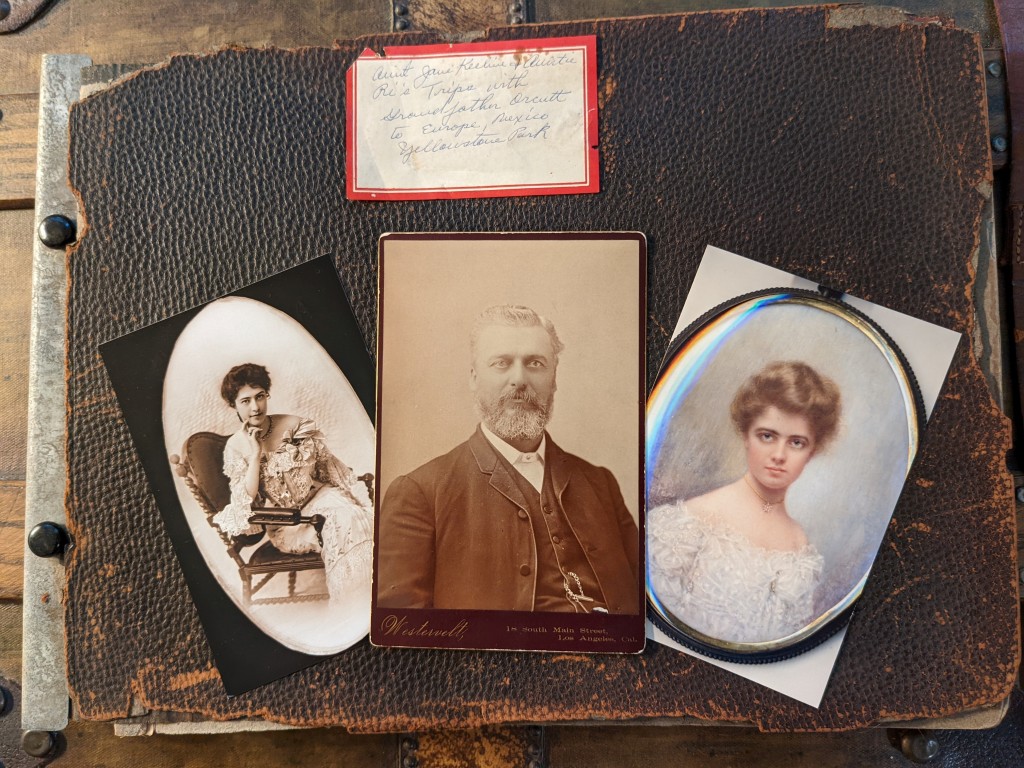
By mid-July 1901, the Orcutts and their friend, Mrs. Martha Blackwell, had made good progress on their Grand Tour of Europe. Thus far, they had visited England, the Netherlands, and Belgium. You can read Part I and Part II if you missed the first two blogs. The next leg of their journey took the Orcutts to Germany, where they traveled up the Rhine River and then toured Heidelberg.
I created a google-map of the Orcutt’s trip, including photographs from their trip and postcard images from the Library of Congress and Ancestry.com. You can click on each location to view the images.
GERMANY
- “LANGUAGE – A slight acquaintance with German is indispensable for those who desire to explore the more remote parts of the Rheinish Provinces. Tourist who do not deviate from the beaten track will generally find English or French spoken at the principal hotels and the usual resorts of strangers; but if they are entirely ignorant of the language, they must be prepared occasionally to submit to the extortions practiced by porters, cab-drivers, and others of a like class, which event he data furnished by this Handbook will not always enable them to avoid.
- TRAVELLING EXPENSES the expense of a tour in the Rheinish Provinces depends of course on a great variety of circumstances…it may be stated generally that travelling in Germany, and even on the Rhine, is less expensive, and in some respects more comfortable, than in most other countries in Europe.” Baedeker, The Rhine from Rotterdam to Constance, 1903.p. xiii.[1]

Nearly every traveler to Germany took a trip up or down the Rhine River between Cologne and Mainz.[2] It was a popular tourist destination because of its historic and legendary associations, castles, old fortresses, and cathedrals. The Orcutts were no exception. Page four of the Orcutt travel album included six pictures of their Rhine River trip where they captured the magic of the castles that beckoned from the hillsides.
“As the Rhine flows, so flow the national genius, by mountain and valley-the wildest solitude-the sudden spires of ancient cities-the moldered castle-the stately monastery-the humble cot. Grandeur and homeliness, history and superstition, truth and fable, succeeding one another so as to blend into a whole.”[3]
More than 100 steamboats and one million passengers went up and down the Rhine annually, according to Baedeker’s 1899 guidebook. The more powerful saloon steamers made the journey from Mainz to Cologne (downstream) in 7 1/2 hours. It took 12 hours to make the trip upstream.[4] Although, I’m not positive where the Orcutts commenced their journey or ended it, I assumed they began their trip in Cologne, a prominent tourist destination.
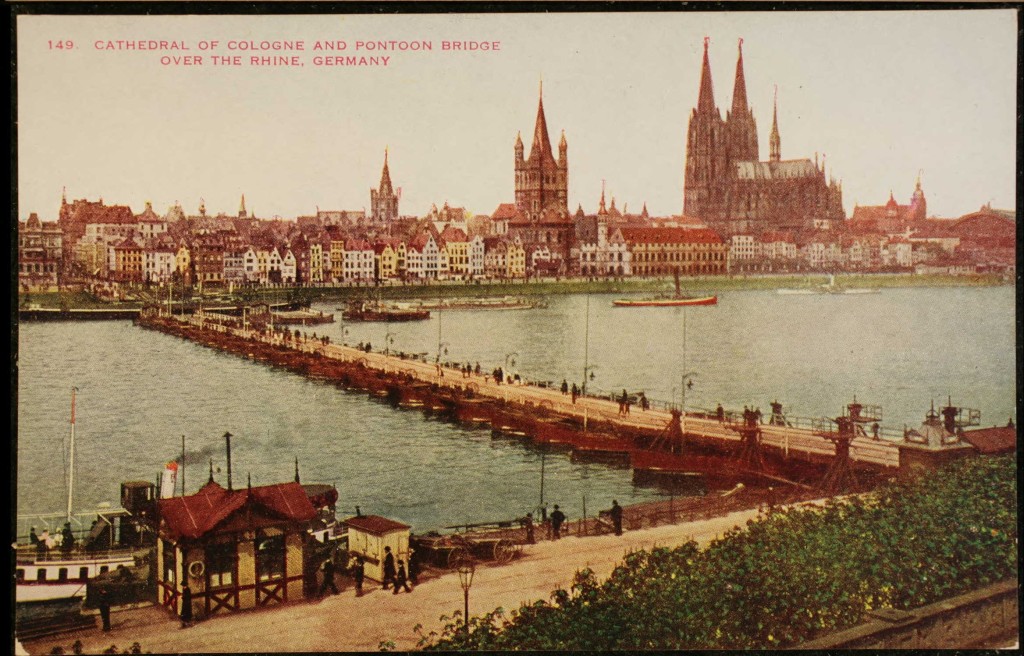
Fourteen-year-old Marion C Haller, a family friend of the Orcutts, toured Europe with her grandfather, George Washington Lininger, in 1900. Lininger established the Lininger Art Gallery in Omaha, where the Orcutt girls attended gatherings. Marion contributed two articles to the Omaha, Excelsior, and recounted her “schoolgirl impressions,” including her trip to Cologne. Her description may be similar to what 16-year-old Jane Orcutt might have written, as the two girls were close in age.
“Cologne is a quaint old city with narrow, crooked streets and horse cars. After visiting the great Cathedral, the ceiling of which looks a little like Trinity, we bought several bottles of cologne and took a large steamer up the Rhine for Frankfort. The scenery was beautiful; high mountains on one side and pretty little towns on the other. Nearly every mountain has a ruin on it. Even at night, the Rhine is beautiful with the different colored lights on the boats and on the shore.”[5]
Suppose you’ve never had the pleasure of a Rhine River cruise. In that case, you can view a six-minute YouTube video that highlights many of the historic castles, including a few that the Orcutts photographed while aboard the Rhine River steamboat.
The comfortable steamers had deck saloons with windows the entire length. While aboard, travelers could partake of the refreshments provided. Tourists who boarded the steamer early were encouraged to have breakfast on the ship instead of rushing through breakfast at their hotel. The table d’hôte was served at 1 o’clock, and wines were a special feature.[6]
The Orcutt’s first picture of their Rhine River cruise showed six people aboard the ship. Two young men smiled at the photographer, probably Anna Ri or Jane, while the bespectacled female friend of the Orcutt girls poked her head from behind. I recognize her large hat from the café picture in Belgium. Martha Blackwell wore her usual severe mien and her funny hat. Two men sat casually on a bench, one smoking a pipe and the other probably paged through a travel guide. Another picture is a similar scene, but Mrs. Blackwell is now missing from the photograph.
(Above: Two photographs from the Orcutt travel album taken on a Rhine River Cruise, July 1901.)
I believe the following photograph is the Marksburg Castle near Braubach. The imposing structure rises 485 feet above the river and is the only fortress on the Rhine which has escaped destruction. Please let me know if you have another suggestion.

Below is a mystery picture. Do you recognize this town along the Rhine River?
My husband, whose father is from the Rhineland, identified the following picture as the Mausetürm (Mouse Tower), a 25-meter tower that sits on a quart-rock in the middle of the Rhine, near Bingen am Rhine. Once a custom tower, the original name was Mauthsthurm or Custom House. the name Mausetürm is said to be “derived from the well-known legend of the cruel Archbishop Hatto of Mainz. Having caused a number of poor people, whom he compared to mice bent on devouring the corn, to be burned in a barn during a time of famine, he was immediately attacked by the mice, which tormented him day and night. He then sought refuge on this island but was followed by his persecutors and soon devoured alive.”[7]
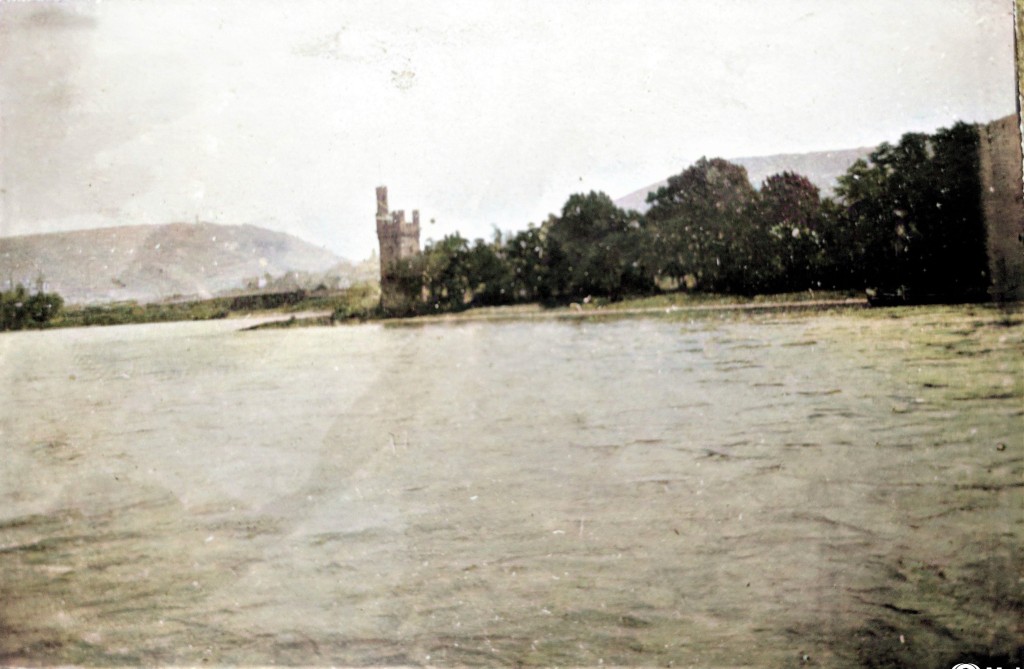


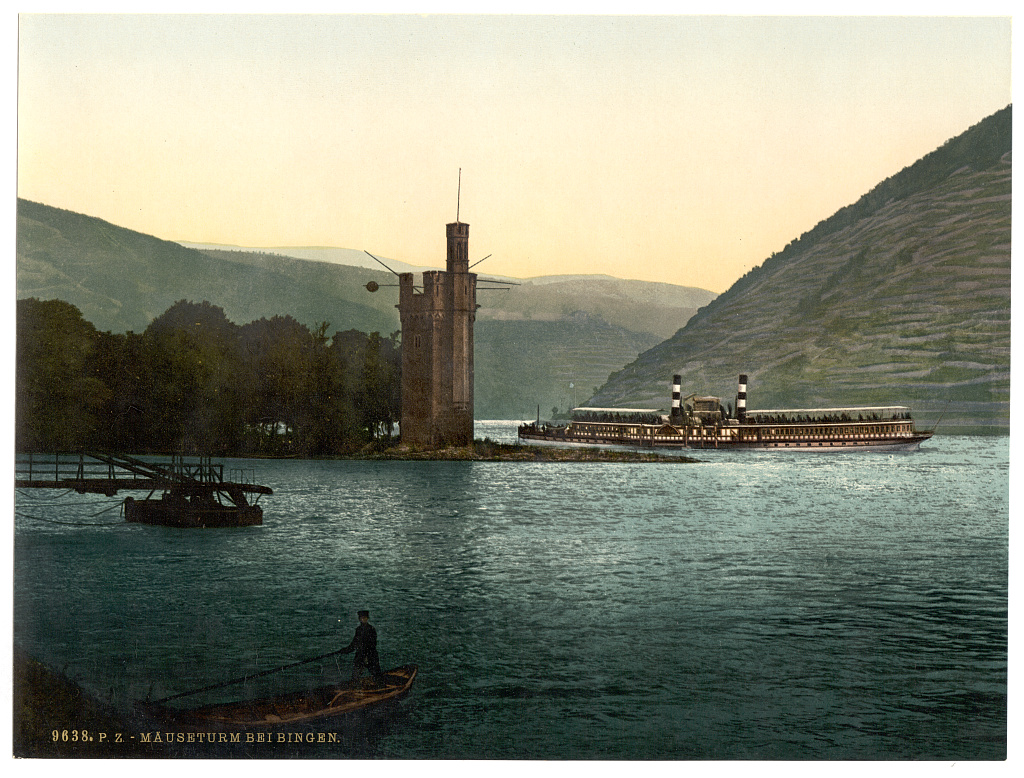
Images above include: Bingen am the Rhine with Mouse Tower in center of the Rhine River from Library of Congress; Modern image of Mouse Tower from Wikipedia; Postcard image of Mouse Tower from Library of Congress.
According to Baedeker’s guidebook, the true story is that the tower was erected as a watch-tower, and “the name was derived from the old German ‘musen’ to spy.”[8]
The imposing Castle of Stolzenfels, situated 310 feet above the Rhine with a pentagonal tower 110 feet high, captured the Orcutts attention. They took two similar pictures of the castle and quaint houses along the river. The castle was built in the 12th century and used as a fortress, a residence, and a prison.[9] I was fortunate to find a postcard on the Library of Congress website that depicts nearly the same scene as the Orcutt’s photograph.

Once again, I relied on my husband’s keen eye and memory to recognize the castle. As a boy, his father took him frequently to the area. He had such fond memories of his trips that a Rhine River cruise was one of the first tours we made as newlyweds when we moved to Germany. I didn’t realize at the time that the Orcutts had traveled the same route gazing in wonder at the beautiful scenery and numerous castles.
After finishing their tour of the Rhine River, the Orcutts traveled to Heidelberg, located on the left bank of the Neckar River. Baedeker’s noted that “few towns can vie with it in the beauty of its environs and its historical interest.”[10] The photograph album included two pictures of Heidelberg Castle; Baedeker’s noted that the castle is “the most sumptuous example of German Renaissance.”[11]

Mark Twain’s description of Heidelberg Castle from A Tramp Abroad, published in 1880, fills the reader with delight and awe, which is what I imagine the Orcutts felt when they gazed on the Heidelberg Castle.
“Heidelberg Castle must have been very beautiful before the French battered and bruised and scorched it two hundred years ago. The stone is brown with a pinkish tint and does not seem to stain easily. The dainty and elaborate ornamentation upon its two chief fronts is as delicately carved as if it had been intended for the interior of a drawing-room rather than for the outside of a house. Many fruit and flower clusters, human heads, and grim projecting lions’ heads are still as perfect in every detail as if they were new. But the statues which are ranked between the windows have suffered. These life-size statues of old-time emperors, electors, and similar grandees, clad in mail and bearing ponderous swords. Some have lost an arm, some a head, and one poor fellow is chopped off at the middle. There is a saying that if a stranger will pass over the drawbridge and walk across the court to the castle front without saying anything, he can make a wish, and it will be fulfilled. But they say this that the truth of this thing has never had a chance to be proved, for the reason that before any stranger can walk from the drawbridge to the appointed place, the beauty of the palace front will extort an exclamation of delight from him.
A ruin must be rightly situated to be effective. This one could not have been better placed. It stands upon a commanding elevation, it is buried in green woods, there is no level ground about it, but on the contrary, there are wooded terraces, and one looks down through shining leaves into profound chasms and abysses where twilight reigns and the sun cannot intrude. Nature knows how to garnish a ruin to the best effect. One of these old towers is split down the middle, and one half has tumbled aside. It tumbled in such a way as to establish itself in a picturesque attitude. Then all it lacked was a fitting drapery, and Nature has furnished that; she has robed the rugged mass in flowers and verdure and made it a charm to the eye. the standing half exposes its arched and cavernous rooms to you, like open, toothless mouths; there, too, the vines and flowers have done their work of grace. The rear portion of the tower has not been neglected, either, but is clothed with a clinging garment of polished ivy which hides the wounds and stains of time. Even the top is not left bare but is crowned with a flourishing group of trees and the shrubs. Misfortune has done for this old tower what it has done for the human character sometimes -improved it.”[12]
I used images.google.com to discover the location of the Orcutt’s photograph. You can see the resemblance between it and the Library of Congress postcard. Notice the group of tourists gathered at the tower’s base in the second picture. The image is too blurry to distinguish the Orcutt family members.
During their tour of Germany, I hope that the Orcutts had the opportunity to visit a “conditerei” or pastry shop, which Mary Cadwalader highly recommended in her travel guide from 1900.
“The conditerei or cake ship is not to be overlooked in German life. As dinner is at one o’clock, and supper not until nine or ten, by four or five it is necessary to take a light intermediate meal, corresponding to the English afternoon tea. Coffee is preferred as a drink, and the solid nourishment consists of all sorts and conditions of cakes.”[13}
I can attest to the fabulous display of delicate pastries that tempt you to indulge in the afternoon pleasure, which we did at every opportunity, wherever we traveled in Europe.
PART IV – The Orcutts tour Paris, France,; Lake Lucerne and the Grindelwald Glaciers in Switzerland.
© 2022 copyright – Kendra Hopp Schmidt. All rights reserved
ENDNOTES
[1] Karl Baedeker (Firm). (1903). The Rhine from Rotterdam to Constance: handbook for travellers. 15th rev. ed. Leipzig: K. Baedeker. P. xiii Digital images. Babel.hathitrust.org. (https://babel.hathitrust.org/cgi/pt?id=uc1.$b263973&view=1up&seq=23&skin=2021)
[2] Luce, Robert, Going Abroad? Some Advice. Boston, R & L Luce Publisher. 1900. Digital images. Archive.org, p. 25. (https://archive.org/details/goingabroadsomea00luce/page/22/mode/2up?q=%22cook%27s+excursionist%22&view=theater
[3] Arnold, Clarissa Sand, Edited by Deborah Stewart Weber (2010). Four Girls in Europe My Tour of England and the Continent, October 1900-September, 1901. Universe, Bloomington, IN, p. 21.
[4] Karl Baedeker (Firm). (1899). The Rhine from Rotterdam to Constance:handbook for travellers. 11th rev. ed. Leipzig: K. Baedeker. P. xvi. Digital Images. Archive.org. Accessed on June 29, 2022. (https://archive.org/details/04250198.5281.emory.edu/page/n19/mode/2up?q=bingen+)
[5] Letters from a School Girl in Germany, Marion C. Haller. The Excelsior, Omaha, Nebraska, October 27, 1900, pg. 8. Digital images. Newspapers.com (https://newspapers.com: accessed June 6, 2022.)
[6] Karl Baedeker (Firm). (1903). The Rhine from Rotterdam to Constance: handbook for travellers. 15th rev. ed. Leipzig: K. Baedeker. P. xvi-xvii. Digital images, Babel.hathitrust.org.(https://babel.hathitrust.org/cgi/pt?id=uc1.$b263973&view=1up&seq=26&skin=2021)
[7] Karl Baedeker (Firm). (1899). The Rhine from Rotterdam to Constance: Handbook for travellers. 11th rev. ed. Leipzig: K. Baedeker. P. 115 Digital Images. Archive.org. Accessed on June 29, 2022. (https://archive.org/details/04250198.5281.emory.edu/page/n179/mode/2up?q=mouse+)
[8] Karl Baedeker (Firm). (1899). The Rhine from Rotterdam to Constance: Handbook for travellers. 11th rev. ed. Leipzig: K. Baedeker. P. 115 Digital Images. Archive.org. Accessed on June 29, 2022. (https://archive.org/details/04250198.5281.emory.edu/page/n179/mode/2up?q=mouse+)
[9] Karl Baedeker (Firm). (1903). The Rhine from Rotterdam to Constance: handbook for travellers. 15th rev. ed. Leipzig: K. Baedeker. P. 114. Digital Images. Babel.Hathitrust.org. Accessed: June 28, 2022. https://babel.hathitrust.org/cgi/pt?id=uc1.$b263973&view=1up&seq=207&skin=2021
[10] Karl Baedeker (Firm). (1903). The Rhine from Rotterdam to Constance: handbook for travellers. 15th rev. ed. Leipzig: K. Baedeker. P. 266. Digital Images. Babel.Hathitrust.org. Accessed: June 28, 2022.(https://babel.hathitrust.org/cgi/pt?id=uc1.$b263973&view=1up&seq=424&skin=2021&q1=heidelberg)
[11] Karl Baedeker (Firm). (1903). The Rhine from Rotterdam to Constance: handbook for travellers. 15th rev. ed. Leipzig: K. Baedeker. P. xxxiii. Digital Images. Babel.Hathitrust.org. Accessed: June 28, 2022. (https://babel.hathitrust.org/cgi/pt?id=uc1.$b263973&view=1up&seq=43&skin=2021&q1=heidelberg)
[12] Twain, Mark. A Tramp Abroad. 1880. Reprint 2021. P. 160.
[13] Jones, M. Cadwalader. (1900). European travel for women: notes and suggestions. New York: The Macmillan company, p. 184. Digital Images. Hathitrust.org

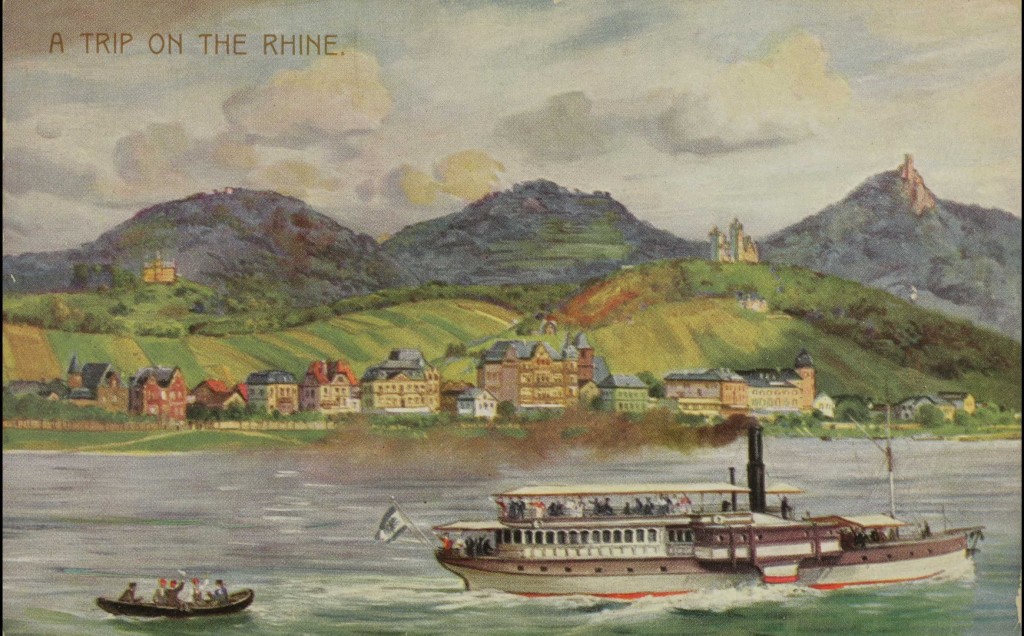


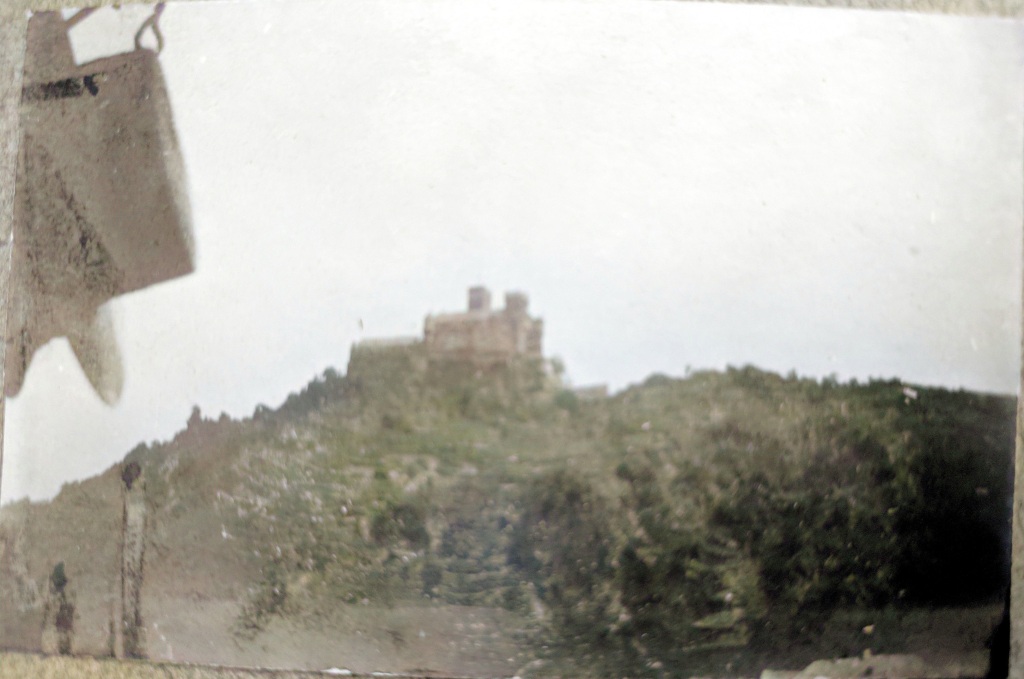
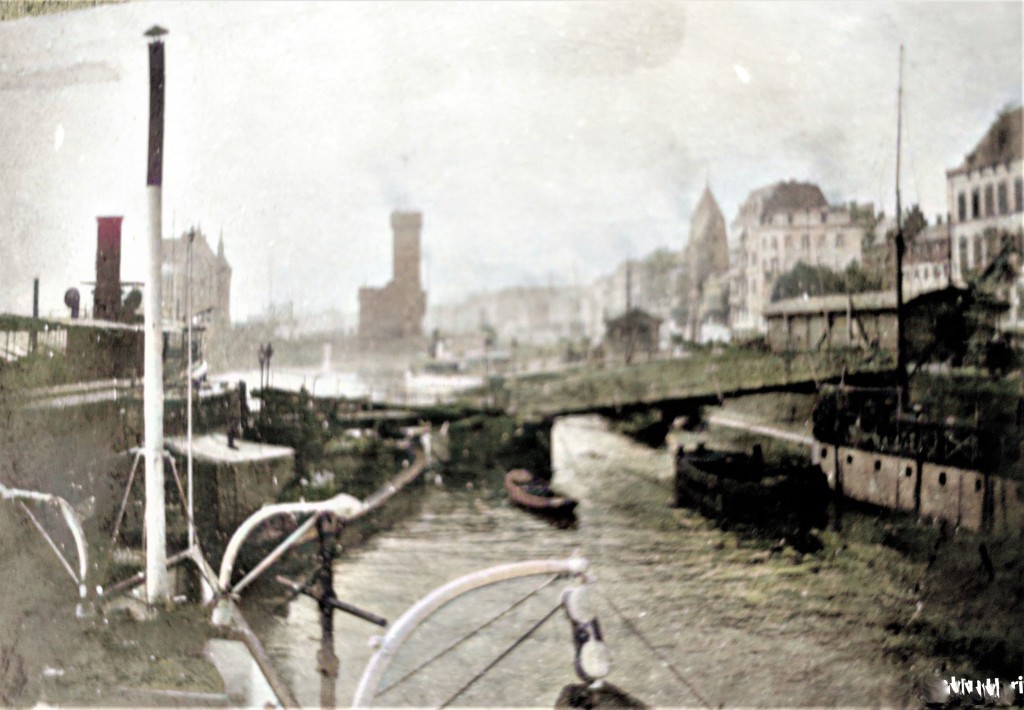



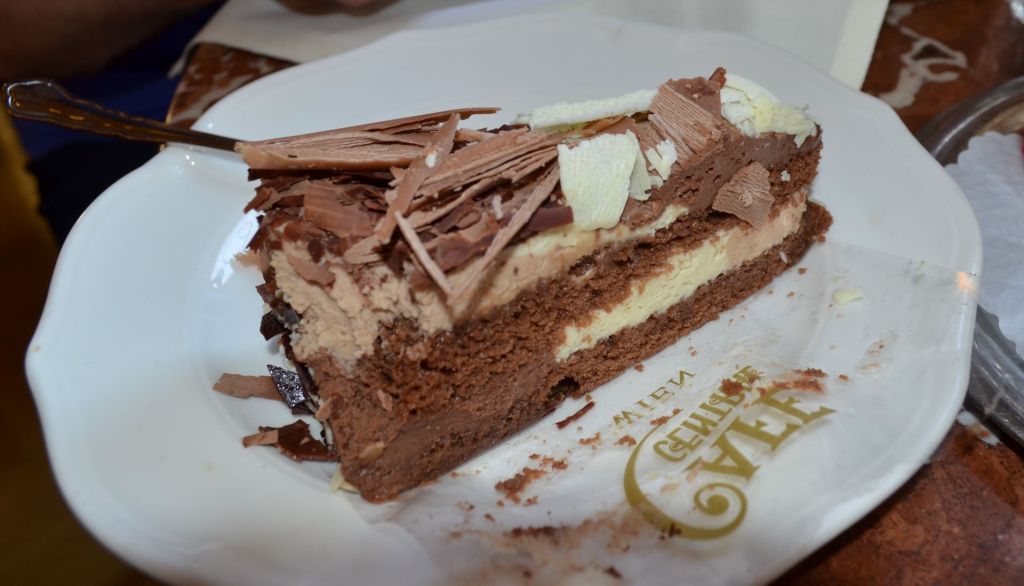

Pingback: GILDED AGE GIRLS- THE ORCUTT’S GRAND TOUR OF EUROPE 1901 – PART IV -FRANCE AND SWIZTERLAND | trekthrutime